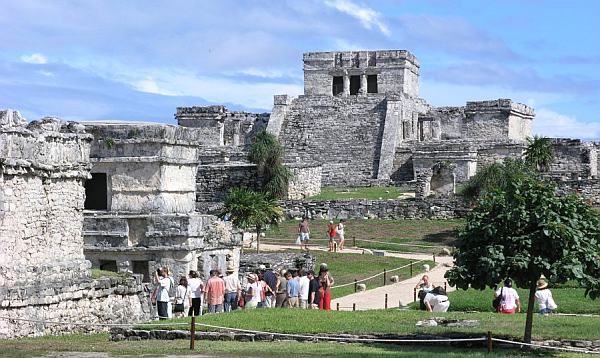Mexico - The five countries that make up the Mundo Maya region expect to welcome 50 million tourists over the next 10 years, thanks to big marketing campaigns this year and expanded cooperation, according to Salvadoran Tourism Minister and president of the Mundo Maya organization, Jose Napoleon Duarte.
"The Mundo Maya project, was started with slightly more than $200,000 in seed money, and will draw at least $2.5 million in investment over the next three years," Duarte stated. "Tourism leads to important things and this alliance among the five countries that make up the Mundo Maya is yielding results."
Joint marketing efforts started last year, focusing on tourism fairs in London, Spain, and Germany, the Salvadoran tourism minister said. "The marketing campaigns have increased the flow of tourists from Europe, the United States, Canada, and other parts of Latin America," Duarte said.
"It is a renewed effort that has been hard. The Mundo Maya organization had already been created, but it was a little sleepy, but now we have managed to establish strategic alliances," Duarte said.
According to Duarte, Guatemala, Honduras, El Salvador, and Belize expect to welcome 5 million tourists this year, while Mexico is forecasting around 10 million visitors just to the Mundo Maya region.
The Mundo Maya organization has certified 20 tourist destinations, of which 10 are in Mexico, and the rest in the other member countries.
Among the Mayan archaeological zones certified by the organization are Palenque, Tulum, Comalcalco, Chichen Itza, Uxmal, and Coba in Mexico; Xunantunich in Belize; Joya de Ceren in El Salvador; Tikal in Guatemala; and Copan in Honduras.
Although a recent find in Guatamala suggests that the ancient Maya actually predicted the world would continue on an additional 4,000 years beyond the 21st century, the reason tourists are flocking to these destinations in such great numbers is because the "traditional" Mayan calendar ends on December 21, 2012, an event that has sparked an internet fueled belief that this marks the end of the world.
The Mayans lived in what are now Mexico, Guatemala, Belize, Honduras, and El Salvador between 800 B.C. and 900 A.D.


